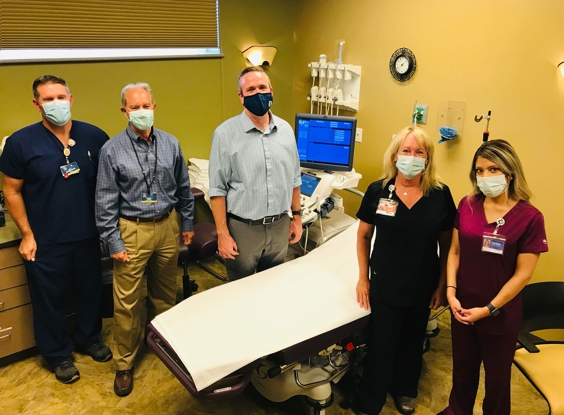Important things to remember about your surgery
- You have three incisions: skin, muscle, and uterus.
- Your abdominal fascia was cut, and the healing of this tissue is essential for long term recovery.
- You have lifting restrictions set by your physician that are important to follow.
Mobility
- Log Roll: When lying down in bed, remember to lay on side first and then roll to your back. Follow the reverse for getting out of bed. You can squeeze a pillow in between your knees and breathe out to help decrease pain as you move.
- Getting out of a reclined chair: Do your belly button pull first and then use your arms to sit yourself up. Avoid having your belly come out as much as possible.
- Picking up your baby: Do your belly button pull first and then bend from the hips and lift from the legs.
-
Breastfeeding positions: Avoid feeding while reclined or semi-reclined
as much as possible because it stresses your healing abdomen. Either breast
feed while sitting all the way upright, or in a side lying position.
- Side lying: Try the side laying approach with a pillow between your knees, a pillow behind your back for support, and your bottom in line with your head. The less you work the better. Cuddle your baby on his or her side next to you, tummy to tummy. The baby’s nose should be level with your nipple. Use your hand to lift and guide your breast so that baby can latch on. Consider talking with your lactation consultant as this is an advanced position and it changes your latch.
Incision care
- Ice 2-3 times per day for 15 - 20 minutes. Be sure and place a thin towel between you and the ice to avoid harming your skin.
- Be sure to keep incision dry in order to decrease risk of infection.
- Self massage: do tiny circles with light pressure about 3 - 4 inches from the incision site for the first 6 weeks. After 6 weeks, consider seeing a physical therapist for advice on other scar mobility techniques.
- Spend some time lying flat. This will help keep your skin used to being stretched so you can stand without incision pain.
- Avoid underwear or tight pants that can irritate your incision or keep it from closing correctly. Once the incision is healed, usually at 6 weeks, consider seeing a physical therapist for advice on sensitivity training.
- If swelling continues, see your pelvic health physical therapist.
- If you have persistent adhesions or pain with mobility, see your pelvic health physical therapist.
Exercise
- Exercise is best when managed by your physical therapist to keep track of your blood pressure and to make sure that you are safe during the first part of the postpartum period.
- Consider relaxing with your baby for about 2 weeks! This helps decrease your chance of developing organ prolapse and helps you heal.
- Do the pelvic floor contractions as instructed by the physical therapist, aiming for 10 short and 10 long activations every time you feed your baby.
- After 6 weeks you can begin to return to exercise. Consider a consultation with a physical therapist for safe exercise return.
Things that are “not normal” but can happen
If you experience any of these, please consider seeing a pelvic physical therapist sooner rather than later. It is easier to fix these problems now!
- Pain.
- Pain with intercourse, bowel movements, urination, sitting, walking, moving in bed, etc.
- Abdominal pain, hip pain, low back pain, pubic pain, pelvic pain, tailbone pain, thoracic pain, shoulder pain, neck pain.
- Anything falling out of your vagina or a feeling of heaviness in your vagina.
- Burning or itching around your vaginal opening or in your pelvis.
- Sensitive scars.
- Urine leaking – even a little bit!
- Fecal leaking/Constipation.
- A split in your rectus muscles, or a pooch when you move.
- Something just doesn’t “feel right”.
Abdominal binders
Initially you should wear your abdominal binder when up and about, especially when lifting. Some women will sleep in binder 24 hours a day for 6 weeks following a cesarean birth. You will wear it longer if you have a DRA (diastasis rectus abdominus, which is a separation of the abdominal tissue lasting longer than 6 weeks). Make sure your incision is clean, dry, and can breathe. See incision care.
-

-
Birth Experience Family Birth Center
My birth experience was incredible.
-Submitted by Anonymous -
Allowing Mom and Baby to Bond Family Birth Center
I appreciate you allowing the mom and baby bond just after birth. It is so important because we don't get that time back.
-Submitted by Anonymous
/




